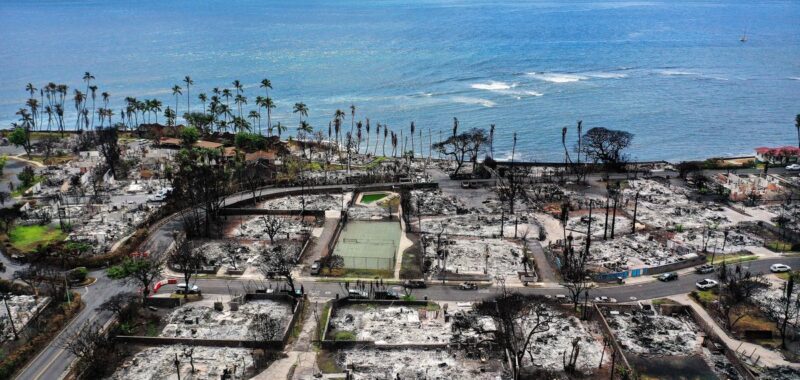New details surfaced this week about cascading failures that led to wildfires ripping through Maui last August. While investigations confirming the cause of the blaze are ongoing, officials are recognizing how unprepared agencies were for the inferno.
The wildfires killed at least 101 people and scorched some 2,200 structures — most of them residential. Downed power lines, blocked evacuation routes, and poor communications all added to extreme conditions that allowed blazes to grow into a monstrous conflagration.
“Questions linger about the adequacy of warning systems, evacuation planning, and the preparedness of communities for such extreme events”
“In the aftermath of this catastrophe, questions linger about the adequacy of warning systems, evacuation planning, and the preparedness of communities for such extreme events,” says a new report commissioned by the Hawaii attorney general that was published by the Fire Safety Research Institute (FSRI).
The report puts together a minute-by-minute breakdown of the events that took place once fire broke out on Maui on August 8th, 2023. Its authors reviewed logs of emergency and radio communications, texts and phone calls, emails, videos, images, and social media posts, as well as relying on eyewitness accounts.
The summary alone is both harrowing and eerily clinical to read. It’s hard to shake firsthand accounts that came out in August of people diving into the ocean to escape flames and scenes of Lahaina, the former capital of the Hawaiian Kingdom, in ashes.
But the 200-page report identifies some telling instances of issues that stymied response efforts. Pipes failed, and water pressure dropped so low that parts of Lahaina had no water flowing from their fire hydrants. Smoke and flames cut off evacuation routes and “overwhelmed the efforts of police and firefighters to evacuate the area.” Without cell service, police officers and firefighters talked to each other on closed channels, including car radios — leaving the public in the dark about what was going on. Some residents created impromptu evacuation routes by “opening locked gates and clearing access to dirt roads.”
Downed power lines entangled fire fighting equipment, forcing crews to abandon it. Utility Hawaiian Electric already faces several lawsuits alleging that its power lines triggered the blaze. Attorney General Anne Lopez clarified that this week’s report doesn’t pinpoint how the fire started — that’s supposed to come out of an investigation led by the US Bureau of Alcohol, Tobacco, Firearms and Explosives, as well as the Maui Fire and Public Safety Department.
On Tuesday, the Western Fire Chiefs Association released a separate assessment of how the Maui Fire Department responded to the disaster. It includes more than 100 recommendations for what could be done better in the future after identifying 17 kinds of “challenges” the department faced in August. Those issues range from lacking enough aircraft or not having a standard inventory of response vehicles to a breakdown in communications via calls, text, and WhatsApp.
These kinds of problems become a bigger risk in an environment that’s made fires more intense around the world. Climate change is making weather more extreme; in Maui, strong winds from a hurricane offshore fanned flames that tore through Lahaina. Invasive grasses, left behind by a history of colonization and plantations on Hawaii, became an explosive fuel source.
The attorney general has two more reports on the way that build off the timeline of events FSRI released this week. Those reports are expected to provide more in-depth analysis of how those events influenced the catastrophe and offer more recommendations to prevent anything similar from happening again.

